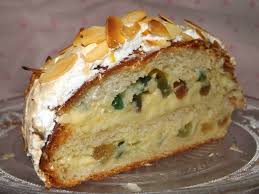Bread is a staple diet in various countries all around the world. It’s magical what a little bit of water, oil, flour and yeast can create. With a crusty exterior and a fluffy, soft interior, bread has been a delicacy even the poorest can afford. When it comes to India, bread has its own special place on its food chart. While the world was busy revering sliced bread and French baguettes, India was busy branching out. This branching out has led to creating mouth-watering bread recipes which have not only become a necessary accompaniment to vegetable dishes and gravies, but also delectable street food. In Mumbai, bread is famously known as ‘pav’ by the locals, and there are many pav recipes available in a comprehensible format, such as pav-bhaji recipes in Marathi or vada-pav and missal pav recipes in Marathi.

The story of pav:
- Although the Portuguese had adopted the Goan lifestyle when they came to India, they desperately missed their beloved meat and bread dishes. They wished to bake bread in India, which they called ‘pao’, they were unable to procure the yeast to do so.
- A Goan cook was their knight in shining armour, as he showed them how to use toddy to ferment dough with acceptable results. This combination of flavours and knowledge led to the bread explosion in Mumbai, where enterprising Goans set up their monopoly of bread making for almost a century. Even the invasion of the British did not deter the people from their belief in the Portuguese-Goancollaboration.
- The production of yeast touched India, and the now rich commodity became a cheap commodity enjoyed by all the masses.
- Flatbreads such as chapatti, paratha, naan, bhatura, and puris were also created using trial and error. Their origin can be traced to the time of Persian invasion in India, and they were widely consumed during the Mughal rule. The slow cooking style of Indian flatbreads enriches their flavour, and the use of the tandoor gives it an edge that compliments Indian dishes.
Benefits of whole wheat bread:
- Bread consists of folate, which is naturally present in wheat and flour. Folate helps in building healthy red blood cells, which are essential for the body.
- Bread constitutes about 10% of calcium in the diet, which is why it is included in daily food.
- Carbs are a scare for health freaks, but some amount of fuel is necessary to keep your body up and running. Bread contains carbs, which is essential for those who require energy to last throughout the day. Whole wheat bread is full of rich carbohydrates which fill you up slowly, thus keeping you fuller throughout the day.
- Consumption of carbs leads to an increase in the neurotransmitter serotonin, which uplifts your mood, and helps say a no to unhealthy guilt causing snacks.
- Whole wheat bread is rich in fibre, which helps you feel fuller for a long time. This prevents you from inching towards unhealthy cravings and aids in watching your weight.
If consumed correctly, bread can quickly contribute to a healthy, fulfilling diet, rich in the nutrients required to make the body function.

